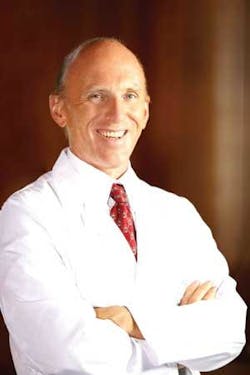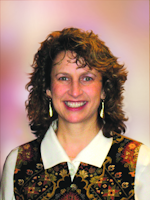LASER VISION CORRECTION: Excimer eye surgery celebrates 25 years

It’s been 25 years since the first clinical application of the excimer laser to correct astigmatism, and the American Academy of Ophthalmology (AAO) is marking the milestone with a special “25th Anniversary of the Excimer Laser” symposium during its 2008 annual meeting in Atlanta (Nov. 7—12).
“The excimer laser has made refractive surgery what it is today,” says Prof. Thomas Neuhann, MD, medical director and founder of ALZ Eye Laser Center (Munich, Germany). “Without it, refractive surgery would … occupy a niche, rather than be mainstream.”
Since the initial surgery 25 years ago, several million laser refractive procedures have been performed worldwide, says the AAO, and the technology has evolved dramatically. In the beginning, the procedure addressed simple myopia and involved uncomplicated algorithms and a fixed 4.5-mm-diameter ablation with a single laser. Eye tracking hadn’t yet developed.
Steven Trokel MD patented the excimer laser for vision correction in 1983. The U.S. Food and Drug Administration approved it for PRK in 1995 and for LASIK in 1999, making the technology mainstream.
Today, the AAO notes, wavefront-guided ablations with multiple transition zones and flying-spot lasers with online eye tracking are standard, and more than 10 excimer laser models are in clinical use. There are four approaches to surface laser surgery and many new pharmaceuticals to aid visual rehabilitation, and fourth-generation mechanical microkeratomes, and femtosecond lasers have improved LASIK flap creation. Diagnostic instruments now permit resolution of corneal and lens anatomy previously matched only by histopathology, while other technologies improve the accuracy of treatments.
Presentations and awards
The symposium, actually a joint meeting of the AAO’s International Society of Refractive Surgery (ISRS/AAO) and the European Society of Cataract and Refractive Surgeons (ESCRS), will feature Dr. Trokel and other instrumental figures describing progression of the hardware, algorithms, and procedures–from the beginning through the future. Forward-looking presentations will explore PRK/PTK for eyes that have undergone collagen crosslinking; corneal-based Presbyopia surgery, online pachymetry, and wavefront-guided applications; and a final presentation Prof. Neuhann titled, “What will the excimer laser look like in 2010?” Asked for a hint, Neuhann said adoption will increase according to traditional views and behaviors in different countries and cultures; and noted that in Germany, radial keratotomy was virtualy nonexistent even during its high times in the U.S. and Latin America–but that surgery for low refractive errors would be nonexistent without the laser. “But, as astonishingly good as the technology already is, there is certainly still room for improvement.”
The symposium will conclude with the Barraquer Lecture, “Corneal surgery is refractive surgery,” given by the 2007 winner of the annual Barraquer Award Medal, Roger F Steinert, MD–and then presentation of the 2008 medal. The award, named for Jose Ignacio Barraquer (1916–1998), who is remembered as the inventor of refractive keratoplasty in 1949, has been presented in his honor since 1987.
The 2008 winner is Jorge L. Alió, MD, PhD, professor and chairman of ophthalmology at Miguel Hernández University (Alicante, Spain). In cooperation with this institution, he created the Instituto Oftalmológico de Alicante (considered one of the most important eye-care centers in the private sector) and the Jorge Alió Foundation for the Prevention of Blindness. Dr. Alió is an active researcher and specialist in ocular neovascularization and inflammation, preventive ophthalmology, refractive surgery, and anterior segment surgery who has won numerous other international awards.

Barbara Gefvert | Editor-in-Chief, BioOptics World (2008-2020)
Barbara G. Gefvert has been a science and technology editor and writer since 1987, and served as editor in chief on multiple publications, including Sensors magazine for nearly a decade.
Peter Gwynne | Freelance writer
Peter Gwynne is a freelance writer based in Massachusetts; e-mail: [email protected].